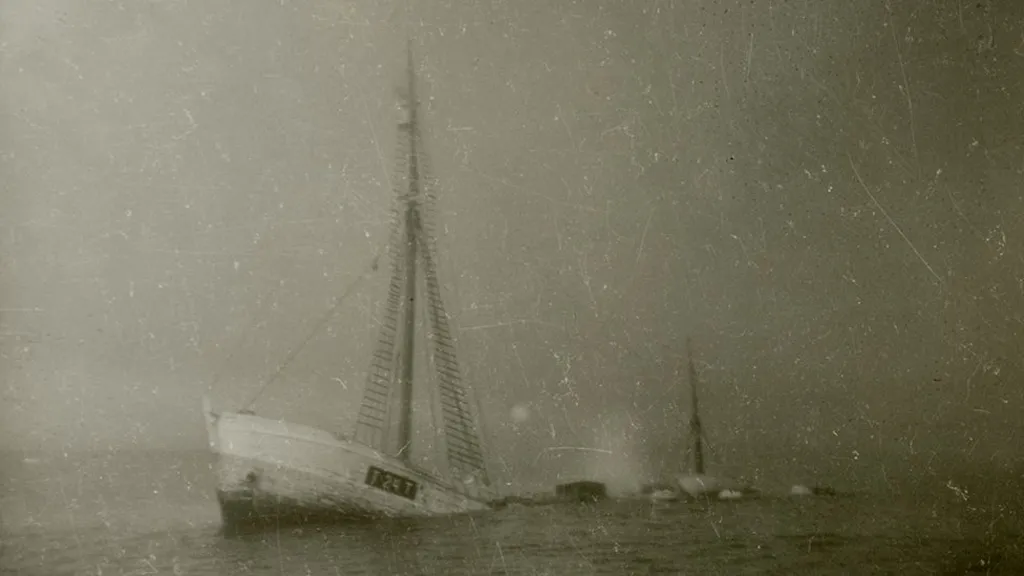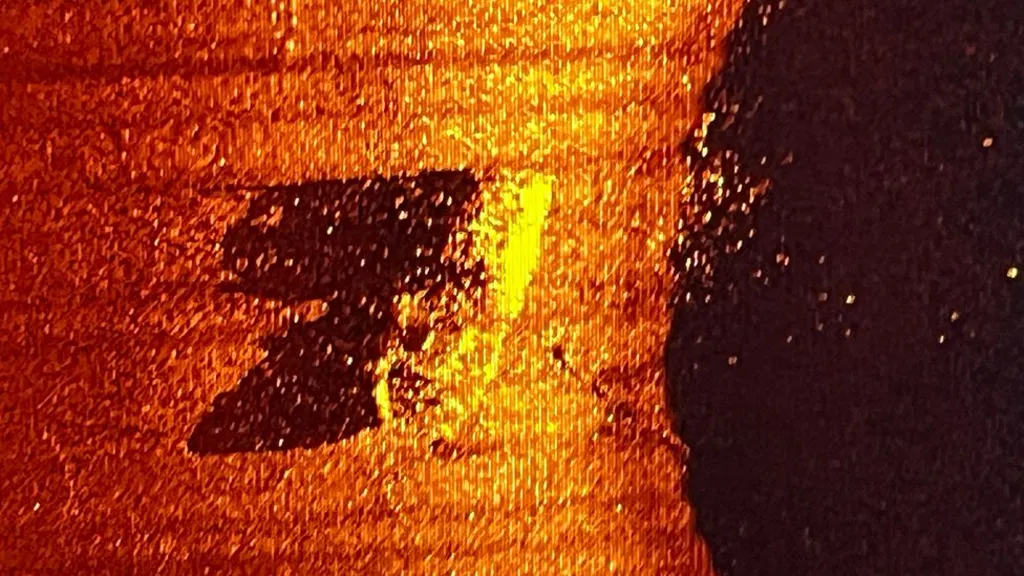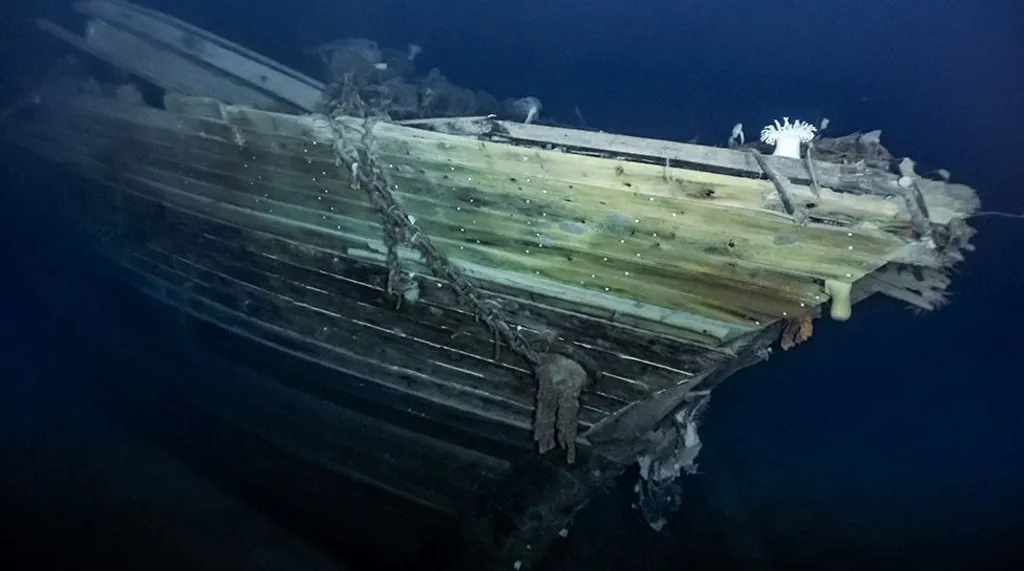A Canadian-led team has found the Quest, the ship on which renowned polar explorer Ernest Shackleton died in 1922.
It was found intact off the coast of Canada’s Newfoundland and Labrador, laying at a depth of 1,280 feet
From BBC by Jonathan Amos
Wreck hunters have found the ship on which the famous polar explorer Ernest Shackleton made his final voyage.
After Shackleton's death, the ship was used for seal hunting, Arctic research and rescue missions. British Arctic Air Route Expedition / Royal Canadian Geographical Society
Localization with the GeoGarage platform (CHS nautical raster chart)
Shackleton suffered a fatal heart attack on board on 5 January 1922 while trying to reach the Antarctic.
And although Quest continued in service until it sank in 1962, the earlier link with the explorer gives it great historic significance.
The British-Irish adventurer is celebrated for his exploits in Antarctica at a time when very few people had visited the frozen wilderness.
"His final voyage kind of ended that Heroic Age of Exploration, of polar exploration, certainly in the south," said renowned shipwreck hunter David Mearns, who directed the successful search operation.
"Afterwards, it was what you would call the scientific age. In the pantheon of polar ships, Quest is definitely an icon," he told BBC News.
And although Quest continued in service until it sank in 1962, the earlier link with the explorer gives it great historic significance.
The British-Irish adventurer is celebrated for his exploits in Antarctica at a time when very few people had visited the frozen wilderness.
"His final voyage kind of ended that Heroic Age of Exploration, of polar exploration, certainly in the south," said renowned shipwreck hunter David Mearns, who directed the successful search operation.
"Afterwards, it was what you would call the scientific age. In the pantheon of polar ships, Quest is definitely an icon," he told BBC News.
Ernest Shackleton is seen aboard Quest as it departs from London on September 17, 1921.
Central Press/Hulton Archive/Getty Images
The remains of the ship, a 38m-long schooner-rigged steamship, were discovered at the bottom of the Labrador Sea on Sunday by a team led by The Royal Canadian Geographical Society (RCGS).
Sonar equipment found it in 390m (1,280ft) of water.
The wreck is sitting almost upright on a seafloor that has been scoured at some point in the past by the passing of icebergs.
The main mast is broken and hanging over the port side, but otherwise the ship appears to be broadly intact.
Quest was being used by Norwegian sealers in its last days.
The main mast is broken and hanging over the port side, but otherwise the ship appears to be broadly intact.
Quest was being used by Norwegian sealers in its last days.
Its sinking was caused by thick sea-ice, which pierced the hull and sent it to the deep.
The irony, of course, is this was the exact same damage inflicted on Shackleton's Endurance - the ship he used on his ill-fated Imperial Trans-Antarctic Expedition of 1914–1917.
Fortunately, the crews of both Endurance, in 1915, and Quest, in 1962, survived.
Indeed, many of the men who escaped the Endurance sinking signed up for Shackleton's last polar mission in 1921-1922, using Quest.
The irony, of course, is this was the exact same damage inflicted on Shackleton's Endurance - the ship he used on his ill-fated Imperial Trans-Antarctic Expedition of 1914–1917.
Fortunately, the crews of both Endurance, in 1915, and Quest, in 1962, survived.
Indeed, many of the men who escaped the Endurance sinking signed up for Shackleton's last polar mission in 1921-1922, using Quest.
The entire crew were rescued
Photo courtesy of Tore Topp
His original plan had been to explore the Arctic, north of Alaska, but when the Canadian government withdrew financial support, the expedition headed south in Quest to the Antarctic.
The new goal was to map Antarctic islands, collect specimens and look for places to install infrastructure, such as weather stations.
Shackleton never made it, however, struck down by heart failure in the Port of Grytviken on the British Overseas Territory of South Georgia, the last stop before reaching the White Continent.
He was just 47 years old.
After his death, Quest was involved in other important expeditions, including the 1930-31 British Arctic Air Route Expedition led by British explorer Gino Watkins, who himself tragically died aged 25 while exploring Greenland.
Quest was also employed in Arctic rescues and served in the Royal Canadian Navy during WWII, before being turned over to the sealers.
After his death, Quest was involved in other important expeditions, including the 1930-31 British Arctic Air Route Expedition led by British explorer Gino Watkins, who himself tragically died aged 25 while exploring Greenland.
Quest was also employed in Arctic rescues and served in the Royal Canadian Navy during WWII, before being turned over to the sealers.
RCGS
The RCGS team members carried out extensive research to find Quest's last resting place.
Information was gathered from ships' logs, navigation records, photographs, and documents from the inquiry into her loss.
The calculated sinking location in the Labrador Sea was pretty much spot on, although the exact co-ordinates are being held back for the time being.
A second visit to the wreck, possibly later this year, will do a more complete investigation.
"Right now, we don't intend to touch the wreck. It actually lies in an already protected area for wildlife, so nobody should be touching it," associate search director Antoine Normandin said.
The calculated sinking location in the Labrador Sea was pretty much spot on, although the exact co-ordinates are being held back for the time being.
A second visit to the wreck, possibly later this year, will do a more complete investigation.
"Right now, we don't intend to touch the wreck. It actually lies in an already protected area for wildlife, so nobody should be touching it," associate search director Antoine Normandin said.
"But we do hope to go back and photograph it with a remotely operated vehicle, to really understand its state."
The Royal Canadian Geographical Society says it has found polar explorer Sir Ernest Shackleton’s final ship, the Quest, off Labrador's south coast, 390 metres underwater.
The wreck was found just 2.5 kilometres from Quest’s last reported position.
Researchers used the ship's last-known position, as well as historical maps and logs, to aid in their search.
(Royal Canadian Geographical Society/X)
Alexandra Shackleton is the explorer's grand-daughter, and was patron to the RCGS survey.
"I was thrilled, really excited to hear the news; I have relief and happiness and a huge admiration for the members of the team," she told BBC News.
"For me, this represents the last discovery in the Shackleton story. It completes the circle."
The explorer continues to spark interest more than a century after his death.
Hundreds of people visit his grave on South Georgia every year to pay their respects to the man known by his crews simply as "The Boss".
"Shackleton will live forever as one of the greatest explorers of all time, not just because of what he achieved in exploration but for the way he did it, and the way he looked after his men," said David Mearns.
"His story is timeless and will be told again and again; and I'm just one of many disciples who'll keep telling it for as long as I can."
Shackleton's Endurance ship was found on the Antarctic seafloor in 2022
FMHT/National Geographic
Links :
- BBC : The book that records all disasters at sea / Shackleton's lost ship found after 107 years / Exhibition recalls Shackleton's final quest
- Smithsonian : Ernest Shackleton’s Last Ship, Quest, Discovered Off the Coast of Canada
- CBC : Explorer Ernest Shackleton's last ship found off Labrador's south coast, says expedition
- The Guardian : Wreck of Shackleton’s ship Quest found, last link to ‘heroic age of Antarctic exploration’
- CNN : Ship of renowned polar explorer Ernest Shackleton found on ocean floor
- The Globe & Mail : Found at sea: Wreck of Shackleton’s last ship discovered off the coast of Labrador
- RCGS : videos / photos
- GeoGarage blog : Will anyone ever find Shackleton's lost ship? / Shackleton's Endurance: Modern star maps hint at famous ... / Antarctic expedition to renew search for Shackleton's ship ... / Shackleton Death or Glory - Rough Seas / Walking in Shackleton's footsteps / Shackleton's icebound survival story, up close / British scientists in race to find lost shipwreck of Ernest ... / Antarctic Weddell expedition targets Shackleton's lost ship / Shackleton: death or glory / Ernest Shackleton voyage to be retraced by modern-day ... / Scott and Shackleton logbooks prove Antarctic sea ice is ... / Haunting words from one of the most daring Antarctic ...
:focal(1250x964:1251x965)/https://tf-cmsv2-smithsonianmag-media.s3.amazonaws.com/filer_public/9f/cb/9fcbea71-bd47-4937-bd11-91a2eb46e3fa/2hx6451jpg-quest_alamy-images-2500x1928.jpg)






Canadian Geographic : Finding Quest
ReplyDelete